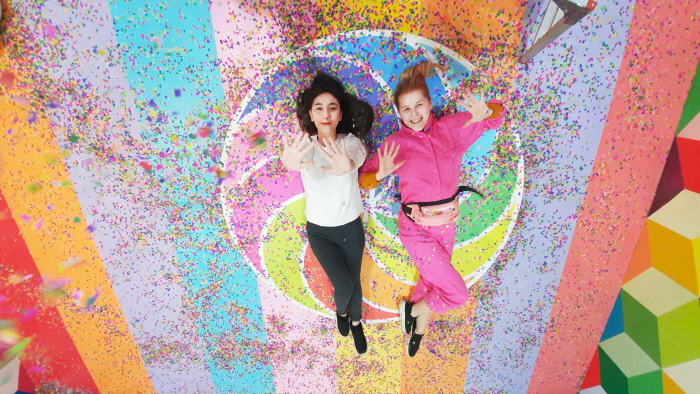Lime Tree Dental Hospital (라임나무치과병원)
2.7Km 2025-10-23
7F, 43 Myeongdong-gil, Jung-gu, Seoul
Located in Myeong-dong, the heart of Seoul tourism, Lime Tree Dental Hospital is a hospital-grade medical institute. It is led by In-su Kim, the Chief Director with 27 years of experience, and it has a team of specialists covering different departments. This hospital boasts superb accessibility as it is right near Myeong-dong Station (Subway Line 4) and Euljiro 1(il)-ga Station (Subway Line 2).
Skilled medical staff in esthetic prosthodontics are in charge of procedures such as One-day Veneer and All Ceramic Crowns. Additionally, medical staff who have experience placing over 35,000 dental implants directly perform implant procedures.
A leader in K-medicine, Lime Tree Dental Hospital is committed to giving customers the utmost satisfaction.
Olens - Hanyang Univ. Branch [Tax Refund Shop] (오렌즈 한양대)
2.7Km 2024-04-18
1F, #3, 4, Sageundong-gil, Seongdong-gu, Seoul
-
Line Friends - Insa Branch [Tax Refund Shop] (라인프렌즈 인사점)
2.7Km 2024-04-16
49, Insadong-gil, Jongno-gu, Seoul
-
KongKongY Gallery [Tax Refund Shop] (콩콩이 그림가게)
2.7Km 2024-04-19
Store #325, 3F, 49, Insadong-gil, Jongno-gu, Seoul
-
Bachi Ring (UMC Jewelry) [Tax Refund Shop] (바치링(UMC쥬얼리))
2.7Km 2024-04-19
#414, 49, Insadong-gil, Jongno-gu, Seoul
-
Color pool Museum (컬러풀뮤지엄(COLORPOOL MUSEUM))
2.7Km 2025-10-27
6F, 49 Insadong-gil, Jongno-gu, Seoul
It is an experiential museum where you can feel the variety of colors with all your senses. If you want to have a picture with a pretty background like a fairy tale, there is no better place than this museum. The pool filled with adorable pink balls is the most popular section that brings happy smiles to everyone, adults and children alike. You can also find various souvenirs related to bathing, such as exfoliating towels and natural soap.
Jigum - Jongno Branch [Tax Refund Shop] (JIGUM 종로)
2.7Km 2024-04-18
F1, F2, 21-8, Bukchon-ro, Jongno-gu, Seoul
-
Lemon Mart - Myeong-dong Branch [Tax Refund Shop] (레몬마트 명동)
2.7Km 2024-04-17
1F, 45, Myeongdong 9-gil, Jung-gu, Seoul
-
Lagidang [Korea Quality] / 락이당 [한국관광 품질인증]
2.8Km 2024-08-27
121, Gyedong-gil, Jongno-gu, Seoul
+82-507-1358-3701
Lagidang is a foreigner-only guesthouse in the heart of Bukchon Hanok Village in Jeongno-gu, Seoul. Public transportation links are good, with Exit 3 of Anguk Subway Station just a seven-minute walk away. The house has a fine view over Bukchon Hanok Village, and early-rising guests will also catch the sunrise in the south-eastern sky. The guesthouse is decorated with art works and Joseon-period antiques.

![Olens - Hanyang Univ. Branch [Tax Refund Shop] (오렌즈 한양대)](http://tong.visitkorea.or.kr/cms/resource/80/2878780_image2_1.jpg)

![Jigum - Jongno Branch [Tax Refund Shop] (JIGUM 종로)](http://tong.visitkorea.or.kr/cms/resource/52/2889052_image2_1.jpg)
![Coco Pharmacy [Tax Refund Shop] (코코약국)](http://tong.visitkorea.or.kr/cms/resource/91/2878591_image2_1.jpg)
 English
English
 한국어
한국어 日本語
日本語 中文(简体)
中文(简体) Deutsch
Deutsch Français
Français Español
Español Русский
Русский